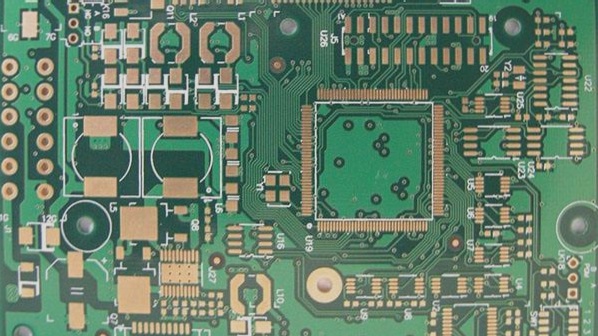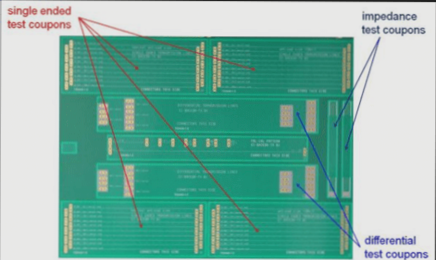1. What is the 20H principle?
In PCB layout and design, the 20H principle denotes the reduction of the distance between the power layer and the ground layer by 20H, where H represents the separation between these two layers. This principle also serves to mitigate edge radiation effects. Electromagnetic interference tends to radiate outward from the board’s edges. By retracting the power layer, the electric field is confined to the ground layer, significantly enhancing electromagnetic compatibility (EMC). Shrinking the distance by 20H can confine 70% of the electric field to the ground edge; reducing it by 100H can limit 98%. We require the ground plane to be larger than the power or signal layers, which helps in preventing external radiation interference and shields the circuit from outside disruptions. Generally, in PCB design, reducing the power layer’s distance by 1mm from the ground layer typically satisfies the 20H principle.
2. How to implement the 3W principle and 20H principle in PCB design?
Firstly, the 3W principle is straightforward to implement in PCB design. It mandates that the center-to-center distance between traces should be three times the trace width. For instance, if the trace width is 6 mils, to adhere to the 3W principle, set the line-to-line rule in Allegro to 12 mils. In the software, this spacing calculation pertains to edge-to-edge separation.
Secondly, for the 20H principle, in PCB design, we typically need to retract the power layer by 1mm from the ground layer when dividing the plane layer. Subsequently, a shielding ground via hole should be created on the 1mm inner retractable area, ideally 150 mils in size.
3. What are the types of signal lines in PCB and what are their differences?
There are two main types of signal lines in PCBs: microstrip lines and strip lines.

1. The microstrip line is a type of strip line that runs on the surface layer (microstrip) and adheres to the surface of the PCB. As illustrated in the figure below, the blue section represents the conductor, the green section indicates the insulating dielectric of the PCB, and the blue block on top is the microstrip line. Since one side of the microstrip line is exposed to air, it can radiate energy or be affected by surrounding radiation, while the other side is in contact with the insulating dielectric of the PCB. This leads to part of the electric field being distributed in the air, with the remaining portion in the PCB’s insulating medium. Notably, the signal transmission speed in the microstrip line exceeds that of the stripline, which is a significant advantage.
2. What are the challenges in PCB design?
3. Figure: Microstrip line schematic diagram
4. Stripline: The stripline (or double stripline) is located within the inner layers and is embedded in the PCB. The blue part signifies the conductor, the green part is the insulating dielectric of the PCB, and the stripline refers to the conductor sandwiched between two layers. Since the stripline is encased by two layers of conductors, its electric field is confined between these two conductive planes, preventing energy radiation and minimizing interference from external radiation. However, as it is surrounded by dielectric materials (which have a dielectric constant greater than 1), the signal transmission speed within the stripline is slower than in the microstrip line.
5. What are the challenges in PCB design?
6. Figure: Schematic diagram of stripline
7. Fourth, what is EMC?
8. EMC stands for Electro Magnetic Compatibility, referring to the capability of a device or system to function properly within its electromagnetic environment without causing or being susceptible to electromagnetic disturbances.
9. In the context of sensors, electromagnetic compatibility pertains to how well the sensor performs in an electromagnetic environment, maintaining its inherent functionality and meeting specified requirements. This includes two key criteria: First, the electromagnetic interference generated by the sensor during normal operation should not exceed certain limits; second, the sensor must possess a degree of immunity to external electromagnetic interference.
10. What design methods can be used to distinguish between analog ground and digital ground in PCB design?
11. Typically, there are several approaches to manage analog and digital grounds:
– **Direct Separation:** Designate the digital area ground as DGND in the schematic and the analog area ground as AGND. Divide the ground plane on the PCB into digital and analog sections, increasing the spacing between them.
– **Magnetic Beads:** Use magnetic beads to connect the digital and analog grounds.
– **Capacitive Coupling:** Connect the digital ground and analog ground with a capacitor, employing the principle of blocking DC through the capacitor.
– **Inductive Coupling:** Utilize inductors (ranging from microhenries to tens of microhenries) to connect the digital and analog grounds.
– **Zero-Ohm Resistors:** Connect the digital and analog grounds using a zero-ohm resistor.
12. In summary, capacitors can isolate DC and create a floating ground. If a capacitor is not connected to DC, it may lead to voltage differences and static buildup, causing discomfort when touching the case. Connecting capacitors and magnetic beads in parallel is redundant, as magnetic beads will conduct while the capacitor may become ineffective. Conversely, connecting them in series results in an impractical setup.
13. Inductors have significant volume, numerous stray parameters, and unstable characteristics, making them challenging to control with discrete distribution parameters. Inductance can also introduce resonance effects, impacting noise.
14. The equivalent circuit of a magnetic bead acts as a band-rejection trap, only suppressing noise at specific frequencies. Since noise can be unpredictable, selecting the appropriate model becomes problematic. Additionally, the frequency of noise is not always fixed, rendering magnetic beads less effective.
15. The zero-ohm resistor provides a very narrow current path, effectively limiting loop current and suppressing noise. Resistance exhibits attenuation across all frequency bands (even a zero-ohm resistor has some impedance), often outperforming magnetic beads.
16. In conclusion, the essential strategy is to connect the analog and digital grounds at a single point. It is advisable to link different types of grounds using zero-ohm resistors, employ magnetic beads when integrating high-frequency devices into the power supply, utilize small capacitors for coupling high-frequency signal lines, and apply inductors for high-power, low-frequency applications.
If you have any PCB manufacturing needs, please do not hesitate to contact me.Contact me



